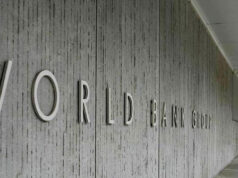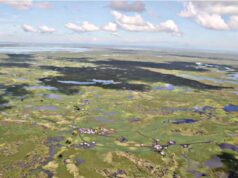
By Denise A. Valdez
Reporter
THE government said Filipinos are growing increasingly confident in e-commerce transactions, and now believes the segment will be equivalent to about 40-50% of Gross Domestic Product by 2022, aided by an aggressive push to get small businesses to adopt the platform.
The government’s current e-commerce road map estimates that transaction on online platforms will be equivalent of 25% of the economy.
Trade Secretary Ramon M. Lopez said at a briefing in Taguig City Tuesday the increased target is fueled by relatively high penetration of pre-requisite technologies like smartphones.
“We can be more optimistic on the usage of e-commerce, because the technology is already here, and the penetration of mobile phones is also here,” he said.
Mr. Lopez added the Department of Trade and Industry (DTI) is also ramping up its target for the number of micro, small and medium-sized enterprises (MSMEs) that will be using e-commerce platforms to 500,000 in two to three years, from the 100,000 by 2020 targeted by the road map.
“Yung 100,000 na-hit na natin, estimate ko lang [Based on my estimates, we’ve already hit the 100,000 target]. Either (we hit it or) we’re close to that… Moving into a 500,000 target in two to three years would be realistic,” he said.
The five-year e-commerce road map was launched in 2016. It also projected that 40-50% of Internet users will be using e-commerce by 2020.
However, the trade department said yesterday that one of its challenges in implementing the road map was the absence of government data available to measure the actual size of e-commerce relative to GDP.
“There is much optimism, but the challenge when we were already implementing the road map is really to get official data generated by the government,” Maria Crispina S. Reodica, chief of the Policy Research Division of the trade department’s Bureau of Trade and Industrial Policy Research, said.
“So (the main measure for achieving) that 25% target is really (to see) 100,000 MSMEs doing e-commerce,” she added.
According to third-party research conducted by Hootsuite and We Are Social, which issued a “Digital 2019” report, about 71% of the Philippine population is on the Internet, of which 70% have bought something online.
Mr. Lopez said with the continuous efforts of private technology firms to advance e-commerce, and the government’s support for MSMEs to adopt digital platforms, the new targets are achievable.
“The important thing for government intervention ay hindi maiwan ang micro SMEs [is to not leave MSMEs behind]. Many of them, while they may have phones, hindi pa gumagamit ng [still don’t use] e-commerce transactions,” he said.
“The potential for them to grow their businesses is so huge. Dapat yun yung i-harness at i-build up ng government [That’s what the government must harness and build up],” he added.
The trade department is currently working on updating the e-commerce road map to revise targets and enjoin other agencies in ensuring the nationwide shift to digital trade.
“They’re all connected. It’s just a matter of converting usage into an e-commerce transaction. So we can be more optimistic even in our targets if you really look into it,” Mr. Lopez said.



